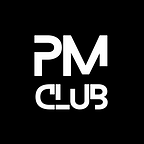The CIRCLES Method: A PM’s Guide to Product Design.
Mastering Product Design with the CIRCLES Method, A simple framework to answer product design questions in PM interview.
In the vibrant world of product management, a successful product design isn’t just about aesthetics or functionality — it’s about solving real-world problems for users.
Over my three-year journey as a product manager, numerous frameworks have promised to be the magic wand for product design challenges. Yet, one method stands out for me in its effectiveness: the CIRCLES Method or CIRCLES Framework.
CIRCLES framework is famously used for Product design interviews by Product managers. This is a good way to structure your answer based on the design question.
Both budding and expert PMs can benefit from this structured approach, ensuring their products not only look and feel great but also meet the needs of their users.
What is the CIRCLES method?
The CIRCLES Method is a systematic framework for tackling product design challenges. It breaks down the often overwhelming process of product design into manageable, actionable steps, ensuring that every aspect of the user’s problem is addressed.
This method has been lauded for its holistic approach, combining the intricacies of user experience (UX) with the practicalities of business objectives.
Concept
At its core, the CIRCLES Method emphasises a user-centric approach to product design. It’s not about what we think looks good or what’s easy to build. It’s about understanding the user’s world, and their pain points, and designing solutions tailored to them.
The method acts as a roadmap, guiding product managers through the maze of user needs, business constraints, and technical challenges to arrive at a product design that truly resonates.
The Seven-Step Explanation
- Comprehend the Situation: The biggest mistakes PM make is jumping to conclusions. Before diving into solutions, take a step back. Understand the broader context in which the user operates. What are their primary challenges? How does your product fit into their daily life or workflow?
- Identify the Customer: Not all users are the same. Segment your user base, understand different personas, and tailor your design to address the specific needs of each segment.
- Report the Problem: Clearly articulate the problem you’re trying to solve. This isn’t about features or functionalities; it’s about user pain points. Having a clear problem statement acts as a north star for the entire design process.
- Cut Through Priorities: In an ideal world, we’d address all user needs. But in reality, constraints exist. Prioritise features and design elements based on their impact and feasibility.
- List Solutions: Brainstorm potential solutions to the problem. Think outside the box, take input from the other party, and remember: there’s no such thing as a bad idea in a brainstorm.
- Evaluate Trade-offs: Every design decision comes with trade-offs. Maybe it’s cost, time, or technical complexity. Evaluate these trade-offs in the context of user benefits and business objectives.
- Summarize Your Recommendations: After navigating the previous steps, consolidate your findings and recommendations. Clearly articulate the proposed design, its benefits, and the rationale behind it.
What types of Product design Questions?
Design Netflix of Kids.
Design Newspaper for the youth
Design Fridge for the blind.
Above are some of the examples of Product design questions asked in the interview. In the future article, I will try to solve one of these Product design questions.
In conclusion, the CIRCLES Method is more than just a framework — it’s a mindset. It shifts the focus from mere aesthetics or functionalities to genuine problem-solving.
As product managers, our core objective is to create products that users love and need. This method, with its structured yet flexible approach, ensures we stay true to that objective.
Whether you’re just starting out or have been in the game for years, the CIRCLES Method is a tool you’ll want in your PM toolkit.
